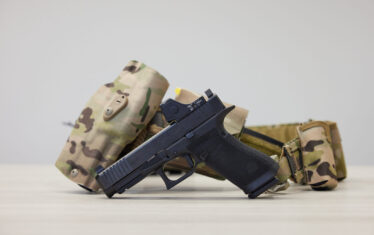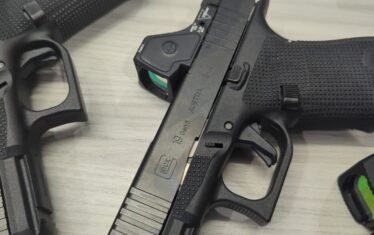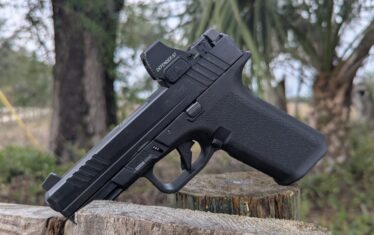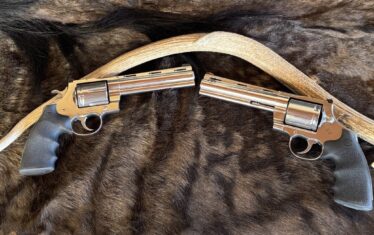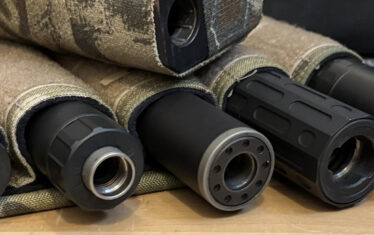The suppressor market is arguably one of the hottest sectors in the firearms industry. Thanks to faster transfer times with the ATF and state-of-the-art manufacturing and designs, it’s not hard to see why. But the industry as a whole isn’t that old.
I had the opportunity to attend the American Suppressor Association Industry Forum at the end of October and was able to glean some new information and insight into this area of the market, much of which can benefit the firearms enthusiast.
WHAT IS THE ASA?
The American Suppressor Association, or ASA, was founded in 2011 by a small group of manufacturers with the idea that “all law-abiding citizens should be able to use suppressors to help protect their hearing.”
As a non-profit and the only group whose sole focus is on suppressor laws and ownership, this small but mighty group of folks has made big waves for suppressor ownership across the nation. Much of what has happened for suppressor education and ownership has come about from their steadfast drive and tenacity to see that change happen.
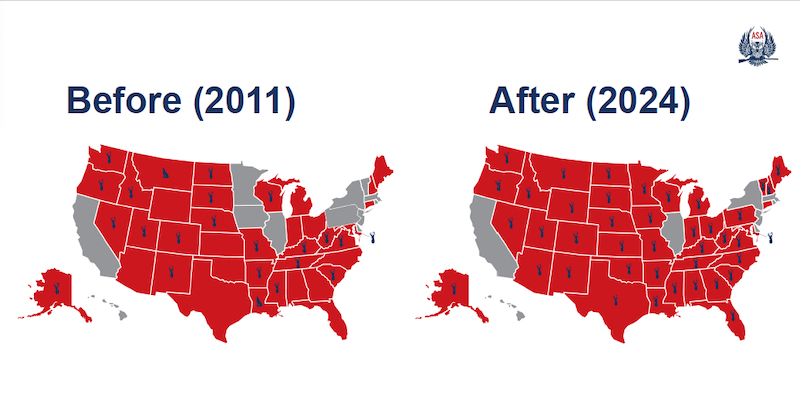
The organization holds demonstrations for lawmakers as a means to educate those individuals who hold the keys to change, media, policymakers, or those who do not have the experience to know any different when it comes to suppressors.
Additionally, the group lobbies and advocates for law changes, providing testimony in hearings at the state and federal levels. Since its start in 2011, the ASA has helped change ownership and hunting rights with suppressors so that citizens in 42 states have the legal right to ownership and 41 states allow those to hunt with suppressors.
ASA INDUSTRY FORUM
So, what’s the big deal about the Industry Forum? This event, held annually by the ASA, helps bring suppressor manufacturers, distributors, and dealers together in one room to discuss and inform them on policy updates and industry trends to protect and help expand the industry as a whole.
It was an impressive group of folks from the suppressor world, coming together to share insights and a path forward. Key takeaways from the Forum were sound testing standards, legal updates, NFA updates from the NFA Division Chief, important collaborations utilized for change, and a candid look forward into the next administration from a White House insider.
Sound Testing
As an industry, there is no set standard for how suppressors are tested and compared to one another. Part of ASA’s drive is to help set that industry standard, almost like a SAAMI for suppressor testing, to help make the field level for all participants.
While there may be some resistance to adopting the standards, I can’t help but see it as a solid step forward as a united front when it comes to the market, allowing for a more tangible and universal way to compare different models on the market to find the best fit for the end user.
Legal updates
What most folks may not know is that the ASA and other key groups have been heavily involved in legal action across the nation, attempting to change laws in states that restrict all ownership.
An example is the current lawsuit in Illinois, Anderson v Raoul, which challenges the current restrictions for citizens in that state. Filed in 2023, this case is vitally important with the main argument that possessing a firearm equipped with a suppressor is protected by the Second Amendment.
While there is a WHOLE lot more to the case than just that, the group remains strong in their optimism that this is only the beginning for the citizens of Illinois and other states in the future.
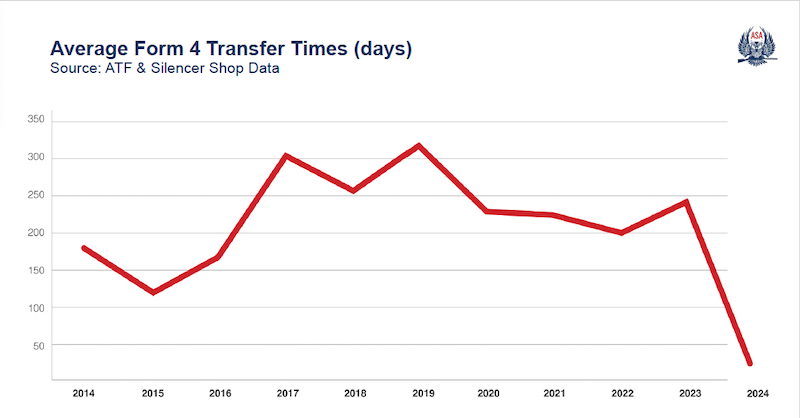
NFA Updates
One part of the Forum that I was interested in hearing was the NFA Division Chief Steve Albro. He was able to deliver an extremely candid synopsis of all things ATF when it came to NFA items for the industry including steps that were taken, how they streamlined their processing, and exact numbers of processing for the year. It was eye-opening.
According to Albro, prior to the overhaul earlier this year, there were a lot of redundancies in processing and inefficiencies that would drag down the process (something that isn’t new to a lot of us).
What they did across the board was change the process from a First In/First Out to what he referred to as “Swim Lanes” with grouped types together (single individual, single trusts, and comprehensive bundling) to make things go smoother.
Albro went on to explain the process more in depth stating that a majority of the slowdowns happen in the background check portion of the process. Once the NFA gets a “proceed” from the FBI regarding a background, essentially their “all clear,” the NFA tries to process those forms on the same day and get the approvals sent out. At the time of his presentations, the average wait time for a Form 4 transfer was three days.
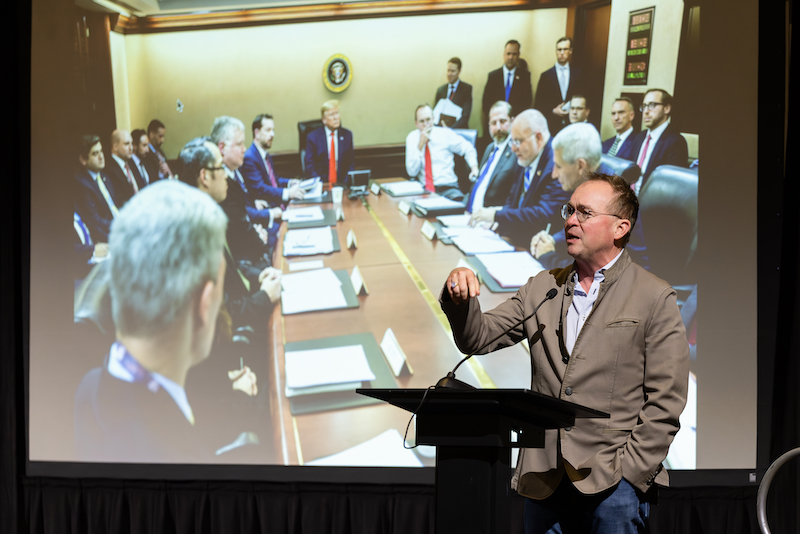
Once the examiner exhausts their assigned Single Individual applications with either “Deny” or “Proceed” from the FBI-NICS, that person transitions to the next swim lane and so on until they have completed their queue. With this new operational flow, there is a constant redirect of resources to help keep the backlog down to a minimum.
He even commented on how some of the examiners, because of this redirect of resources, are able to specialize in one type of application, helping to further speed up the process overall. (Things like specializing in Trusts so they know exactly what to look for and can do so quickly without having to change between different types. It makes things very fast after a while.)
Where the slowdowns happen is if the FBI doesn’t issue a “Proceed” right away. When the FBI-NICS issues an ”Open” disposition it means that that particular background needs more investigation before they can say one way or another. This can happen if someone has a common name, shares a name with a prohibited person, or has a record that needs a little more information before they can rule.
Add into that that the FBI-NICS has an obligation to process any applications for GCA before any further investigations in NFA transfers. Ultimately, Albro suggests using a UPIN or including the social security number on the application to help speed things up.
According to NFA Division Chief Albro, for the Fiscal Year 2024, there have been over 1,373,000 NFA applications, and over 834,000 Form 4s processed. The total number of registrations of new suppressors has been holding steady throughout the year, and the total backlog of form has dropped from almost 260,000 forms for FY2023 down to just under 72,000 for FY2024, showing a decrease of over 186,000 forms. All in all, Albro wants transparency with the industry and ATF and that showed in his presentation.
Collaborations for Change and Looking Forward
Those at the ASA are quick to point out that they aren’t doing this work alone and pointed to a few different groups they work with regularly to make the changes. The collaborations with the Congressional Sportsmen’s Foundation (CSF) and Firearms Regulatory Accountability Coalition (FRAC), the ASA has been successful in bipartisan work for legislative changes and holding ATF accountable as an agency.
The last section of the forum was quite enlightening in that the guest speaker, a White House insider, was none other than former Chief of Staff Mick Mulvaney.
During his candid discussion, he explained how he started in politics and ultimately came to work in DC in the Trump Administration. He shared insights on how things would go if Trump won reelection (because remember this happened in late October) and how he sees things going for the future administrations.
While I won’t quote him exactly, he was able give a good look at what the industry can do going forward. (Hint: it’s getting knowledgeable people in the administration to help guide Second Amendment interests).
ASA FORUM BANQUET
The Silent Night Banquet was held at the Bullock Texas State History Museum, as a means for fundraising for the American Suppressor Association Foundation, the litigation side of the ASA. The event had a live and silent auction and a keynote address from Mick Mulvaney as a discussion with ASA President and Executive Director Knox Williams and General Counsel Michael Williams.
Held in the beautiful museum, the event was a way to mingle with other industry people, possibly bid on some really cool items, and generally have a good time for an even better cause.
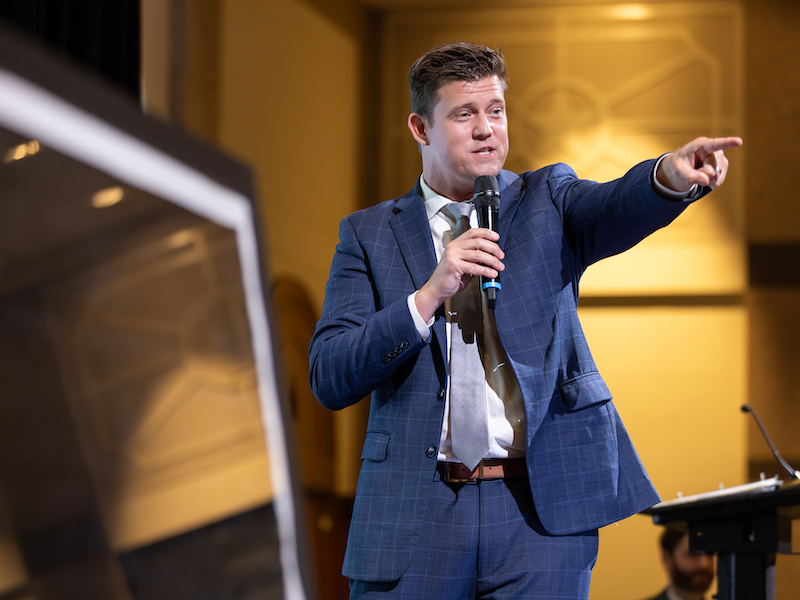
Several items went up for bid during the live auction (which was really lively thanks to very entertaining auctioneer Zack Krone). Attendees had a chance to win a rifle course, firearm packages, Brazillian Jiu-Jitsu and firearm courses, hunting trips in Georgia and at SilencerShop’s own Dave Matheny’s Matheny Ranch, among other one-of-a-kind items.
The real pièce de resistance was the “No Quarter” blackout American flag donated by Special Operations Care Fund (SOC-F), taken by elite American Commandos in the Middle East and Challenge Coin from that same group. It was impressive to see and to hear the story behind the flag.
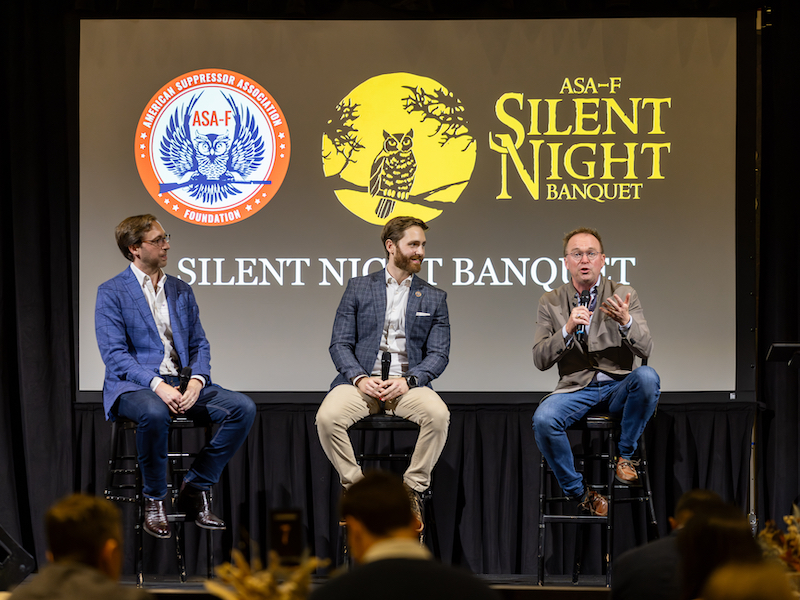
The ASA Forum and Silent Night Banquet were quite the event, to rub shoulders with Industry elites and gain a new perspective on the diligent work of the ASA and partners.
With more and more manufacturers supporting their endeavors, the ASA sees the sky as the limit when it comes to their mission of universal legal ownership and hearing protection. It should be fun to see where this industry goes next!
If you want to learn more or get involved, check the American Suppressor Association online.






